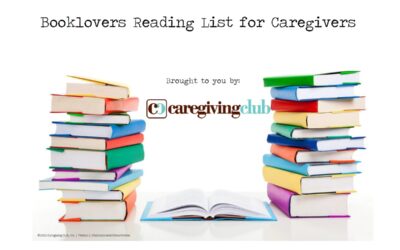Sherri Snelling originally wrote this blog for Huff Post 50
“If you don’t like what’s being said, change the conversation.”
— Don Draper, AMC’s Mad Men
As America tunes in for another season of TV’s Mad Men, I thought about the ‘60s and approaching ‘70s workplace changes being played out in the series over the last five seasons: women entering the workforce with ambitions beyond being a secretary (Peggy Olson), single working mothers (Joan Harris), civil rights on the job (Dawn, Don Draper’s secretary). If Matt Weiner and his ace writing team could flash forward to today’s work environment, my hope is they would seize upon the biggest issue facing America’s workers today: caregiving. Would we see episodes where Peggy has to choose between her career and caring for her aging mom? Or where Joan becomes a Sandwich Generation caregiver struggling to juggle all the balls in her life: raising her son, taking care of a mother with dementia and fully participating as a partner in Sterling Cooper Draper Pryce?
Don’t Ask, Don’t Tell
Here is what we know today: 7 out of 10 caregivers work full or part-time and represent more than 15 percent of our entire U.S. labor force. We also know over the coming years our society faces a longevity silver tsunami where we are all living longer and more baby boomers are holding onto their jobs putting off retirement while simultaneously caring for aging parents and spouses. And it isn’t just a boomer issue – Pew Research recently reported 42 percent of the younger Gen Xers are Sandwich Generation caregivers – more than their baby boomer counterparts (33%). All this has created an evolution at work – one where workers are more concerned about elder care than child care.
What is challenging for working caregivers and their employers is caring for an older parent or ill spouse is not a joyful event, you don’t come to work with smiles and stories like you would if you were pregnant or just became a grandparent for the first time. In addition, in an era where the economy remains on life support, many employees are concerned about identifying themselves as caregivers fearful for their job security. A report by the National Alliance for caregiving found 50 percent of working caregivers are reluctant to tell their supervisor about their caregiving responsibilities. In addition, the Shriver Report: A Woman’s Nation Takes on Alzheimer’s found 46 percent of female employees asked for time off for caregiving and could not get it forcing them to make a choice between elder care and employment.
There are two problems with this situation: 1) Caregiving employees are forced into the closet – mirroring the gay rights issues over the last few decades where lifestyle remained a secret out of fear of reprisal; 2) Employers who don’t hear or understand the personal lifestyle challenges facing their employees cannot be called upon to institute programs and work environments where these employees can get support to stay on the job, be productive and remain healthy thus continuing to positively impact the company’s bottom line.
C-Suite – Challengers or Champions for Caregivers?
The employer challenge is caregivers are invisible. When I interviewed Eric Dishman, Intel Fellow and general manager of the Intel Health, Strategy and Solutions Group, for my new book, he told me this story, ”Years ago, I presented a proposal for new technology products to help caregivers. After the presentation, the lead executive told me he didn’t think anyone would really need or buy these types of products.” Dishman asked the executive to call his wife and much to his surprise the executive did. After a few minutes on the phone with his wife, Dishman handed the phone back to the executive. The wife told her husband this was the first time in his 25 years at Intel he would actually develop products that could help her. She was caregiving for her mother-in-law at the time.
“This is an illustrative story to show it’s not malice, it was just that the caregiving his wife was doing was completely invisible to him,” says Dishman. “He was at work all day and he doesn’t see that she is at work all day with a caregiving job. “ Dishman says the executive realized if his wife was going through this maybe millions of other Americans were too. (By the way, Dishman got his funding and Intel continues to be a leader in caregiving technology and supporting its caregiving employee workforce).
One organization working to erase the invisibility of caregivers on the job is the Alzheimer’s Association and its Alzheimer’s Early Detection Alliance campaign. More than 1,600 companies have signed on to receive information and educational materials for its workforce on the prevalence and impact of Alzheimer’s disease. Companies including GE Healthcare, Genworth, Dow Chemical Company and others have provided dementia care education to 4.5 million employees.
“Through this program, we offer support, information and resources in the workplace to erase the stigma that more than five million people in the U.S. living with the disease and more than 15 million caregivers may face,” says Tom Murphy, vice president of the Alzheimer’s Association corporate initiatives and sponsorship.
Yet, invisibility seems to continue to be a caregiver workplace issue. When Marissa Meyer, CEO of Yahoo, announced her plan to disband the practice of telecommuting among her employees, the unintentional discrimination was against a growing population among our workforce who are being drafted daily into the largest volunteer health care army we have: the nation’s 65 million family caregivers. While certain jobs (factory line workers, retail environment and shift sales people) require an employee to show up physically, many jobs can be performed from a virtual office, especially with the technology at our texting, videochatting fingertips these days.
When we remove options for mature workers – the average age of a caregiver is approximately 50, which will be the age of 1 in 4 workers in the next seven years – we force these employees into tough personal and financial decisions that ultimately may have ripple effects in the future welfare of our citizens and our country. Do you leave your job or cut back on hours to care for mom, thus jeopardizing your future earnings and benefits such as Social Security and 401K contributions? Do you stop saving for your own retirement or child’s college tuition because the cost of in-home care or a nursing home for mom exceeds her savings and long-term care policy and you have to subsidize her care costs?
Caregiving doesn’t discriminate – each and every one of us will be affected by it – which is why it is important for employers to not discriminate against caregiving employees. And as with all workplace revolutions, it has to start at the top with the C-suite executives like Marissa Meyers. I believe if you show trust in your employees and a willingness to help them work through the demands of family life, that trust will be paid back both in productivity and loyalty.
Jennifer Owens, editorial director of Working Mother Media, which has published an annual “best companies for working moms” list for more than 27 years, responded to Meyer’s announcement in an interview with the New York Daily News, “It’s incredibly disappointing that she would do that. It’s a step in the wrong direction.”
“One of the challenges for employers is those companies that do offer some services to support employees have these programs coordinated through human resource departments where personnel are not trained on aging issues,” says Gail Hunt, president and CEO of the National Alliance for Caregiving whose organization published a report on the best practices in workplace elder care, including CBS, Kimberly Clark, Johnson & Johnson and Duke University.
In the annual Honor Roll from the non-profit organization, The Center for Companies That Care, one of the 10 characteristics of the 13 companies chosen is “Consider the human toll when making business decisions.”
As Don Draper strides into season six of Mad Men, he is not only contemplating his relevancy in a modern (1968 modern) world but also the human toll of his business decisions (Lane Pryce’s suicide, overlooking Peggy’s contributions and thus losing a valuable employee). Here’s raising my high ball glass to those companies who have already decided to take the lead to support rather than stigmatize caregivers. They recognize the relevancy of keeping caregivers in the modern workplace. And to those on Madison Avenue and beyond – supporting caregivers on the job is the change in the conversation we need to have now.








0 Comments
Trackbacks/Pingbacks